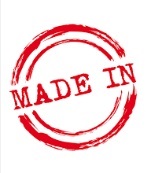 Over the past few decades, companies in search of new growth opportunities expanded beyond their borders to find a world of new consumers eager to try their brands. French retailer Carrefour, for example, started with a single storefront in 1958 and now operates stores in more than 30 countries, including Brazil, China and Indonesia and many countries in the Middle East. Likewise for U.S.-based Walmart, which now has stores in 27 countries. And some companies reach consumers in virtually every corner of the world: U.S.-based Procter & Gamble sells brands in more than 180 countries, and Japanese automaker Toyota sells vehicles in more than 170 countries.
Over the past few decades, companies in search of new growth opportunities expanded beyond their borders to find a world of new consumers eager to try their brands. French retailer Carrefour, for example, started with a single storefront in 1958 and now operates stores in more than 30 countries, including Brazil, China and Indonesia and many countries in the Middle East. Likewise for U.S.-based Walmart, which now has stores in 27 countries. And some companies reach consumers in virtually every corner of the world: U.S.-based Procter & Gamble sells brands in more than 180 countries, and Japanese automaker Toyota sells vehicles in more than 170 countries.
All of this cross-border expansion, however, has greatly complicated traditional definitions of country of origin. Some iconic “local” brands are actually manufactured abroad, while some foreign brands have built a manufacturing presence in local markets. And some global brands have been in a market so long that many consumers actually perceive them to be local. Nonetheless, brand origin can be an extremely valuable asset for both global and local companies.
THE IMPORTANCE OF BRAND ORIGIN IN PURCHASE DECISIONS
Many consumers appear to have strong preferences about the origin of the products they buy, but how important is this attribute really when they consider a purchase? How does it stack up against other selection factors?
The short answer: It matters—a lot.



